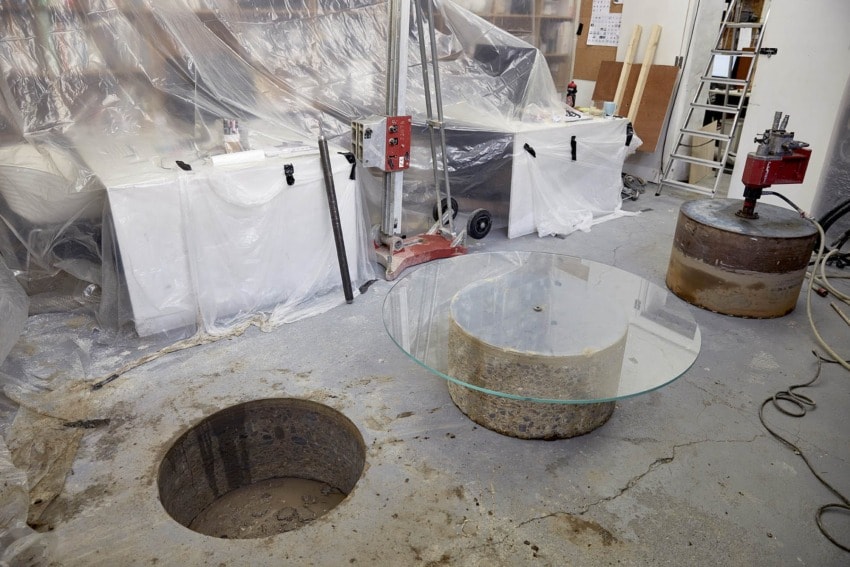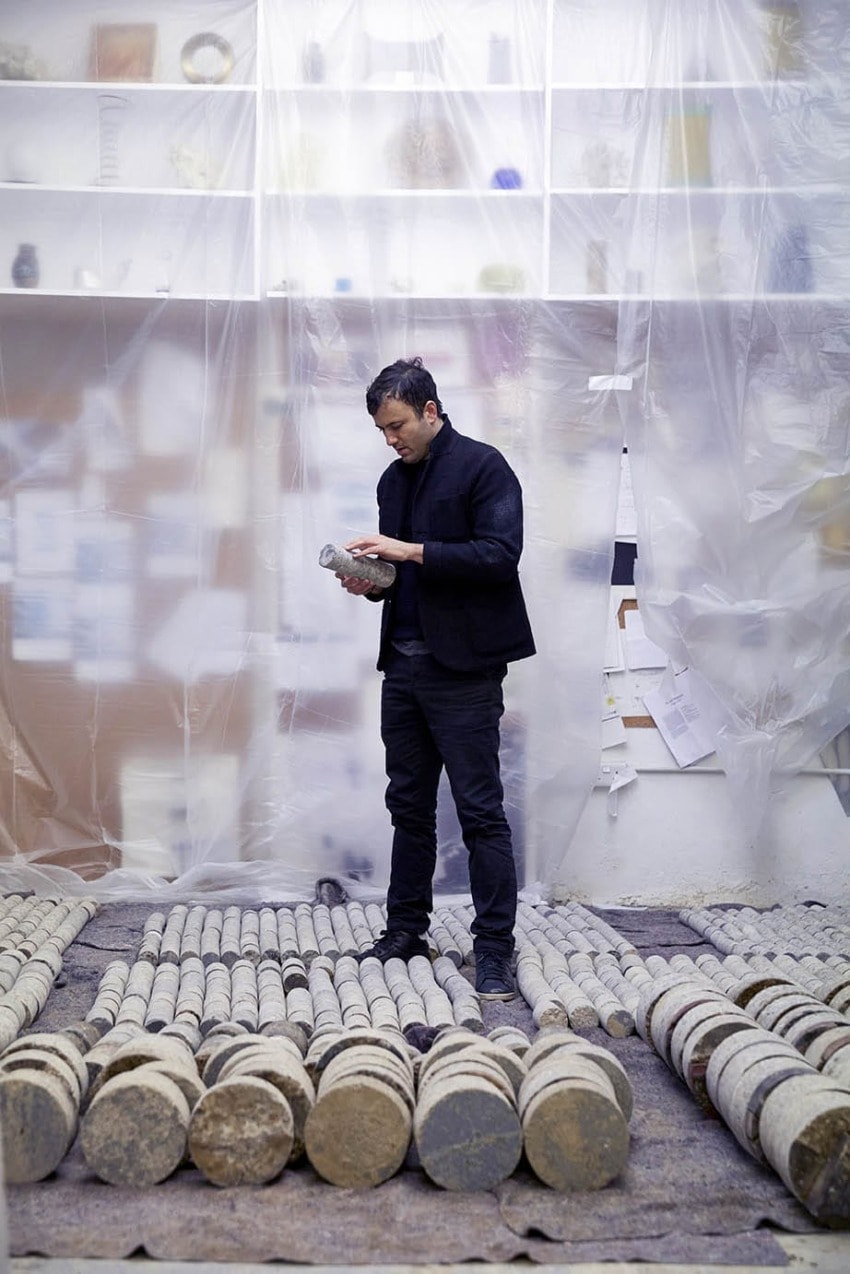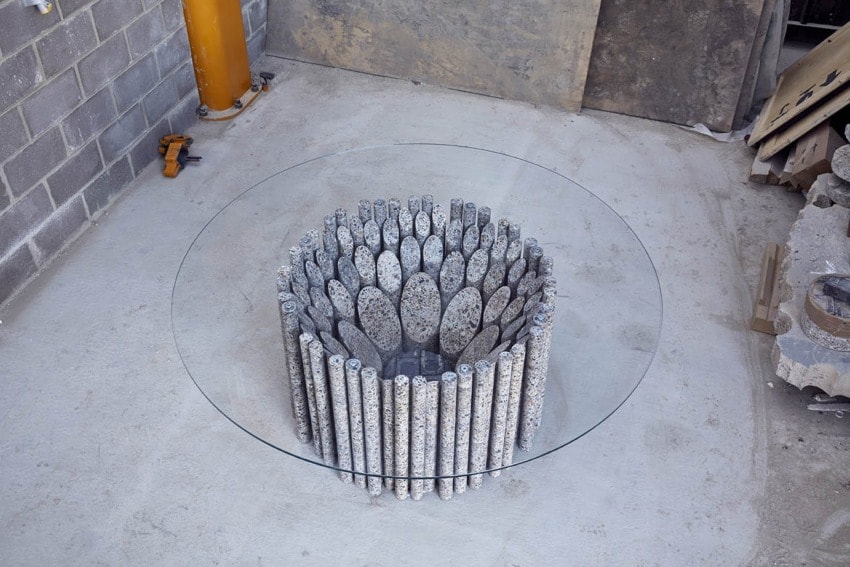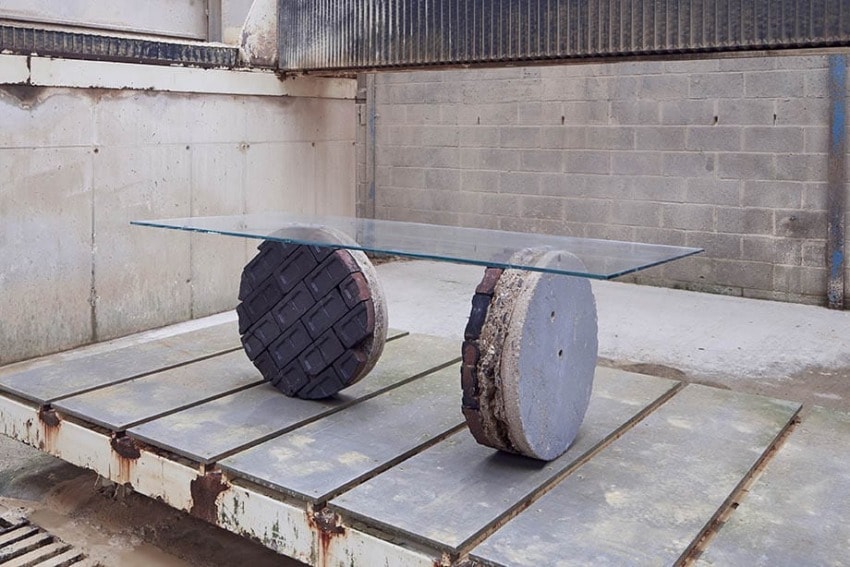Designer Paul Cocksedge Excavates His Studio for His Latest Creations
Facing eviction, the designer uses pieces of his London work space for a new suite of furniture to debut during Milan Design Week

British designer Paul Cocksedge creates the kind of work that makes you think—if not exclaim outright—“That’s brilliant!” To conjure his minimalist furnishings and lighting, he experiments intensively with materials and process, but the resulting pieces inevitably embrace whimsy, surprise, even visual sleights of hand: ghostly pendant lights that appear to float in midair, say, or cantilevered metal tables that by all rights look as if they should topple over. There’s a moment of discovery that happens once you recognize the magic.

The latest works to emerge from Cocksedge’s London studio, former Victorian stables in Hackney, will be the last ones produced in the space. With an impending redevelopment of the site forcing the designer to relocate, he decided to make the building itself part of a farewell project.

Using special tools, Cocksedge repeatedly cut deep down into the studio floor and extracted hundreds of cylindrical core samples, each revealing layers of concrete, rubble, and brick. He then trimmed the circular pieces—some resembling rustic terrazzo—and incorporated them into glass-top tables and shelving.

Five of these works will be unveiled at the Palazzo Bocconi-Rizzoli-Carraro in Milan, April 4–9, to coincide with the Salone di Mobile. Titled “Excavation: Evicted,” the show is being presented by Friedman Benda, Cocksedge’s New York gallery, in collaboration with Beatrice Trussardi, whose foundation supports a variety of art projects, often in unconventional spaces. (The palazzo is currently undergoing renovations and is slated to reopen as a museum of Etruscan art next year.)

Cocksedge’s idea for the body of work was to commemorate the dozen years he spent in the studio and to reference the building’s history. He also sees it as being symbolic of how London’s surging real estate prices are pushing creative communities out of many neighborhoods and requiring them to take root elsewhere. “This project is a personal elegy,” notes Friedman Benda director Jennifer Olshin. “But it’s also a metaphor for reinvention.”